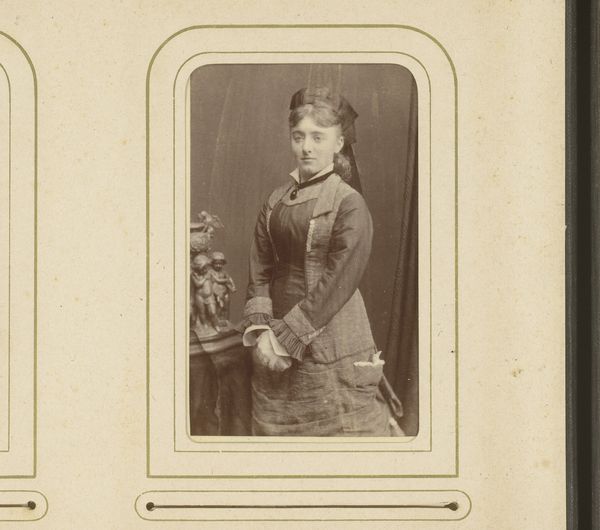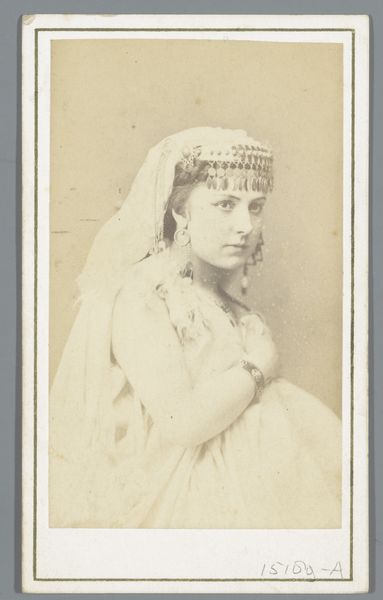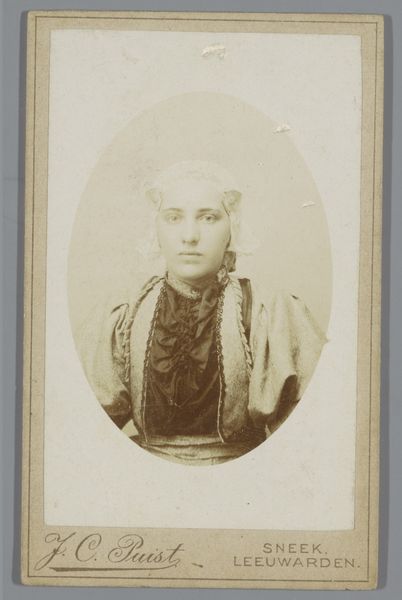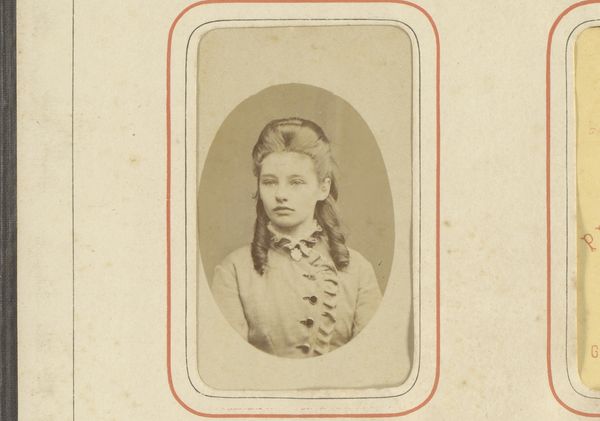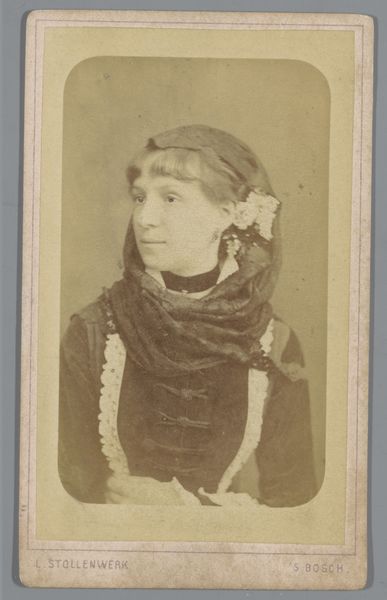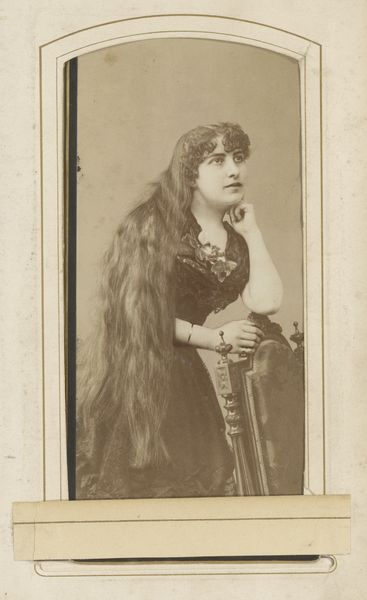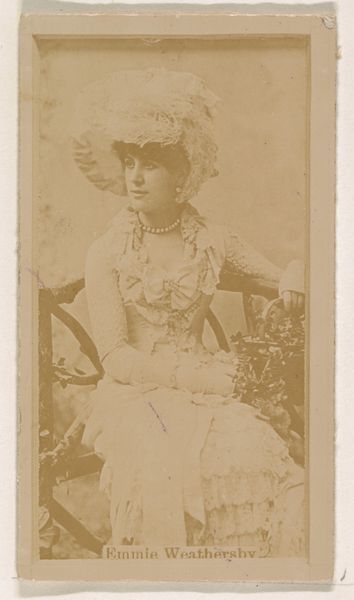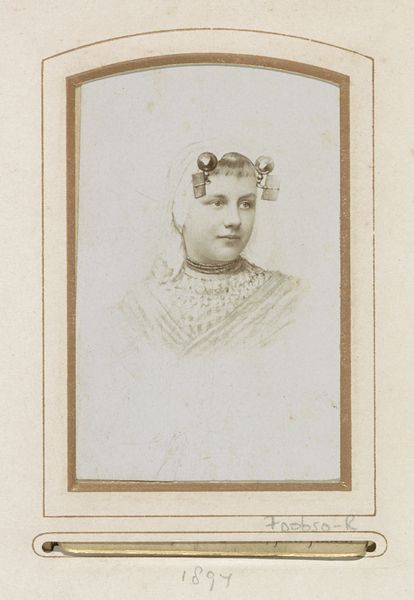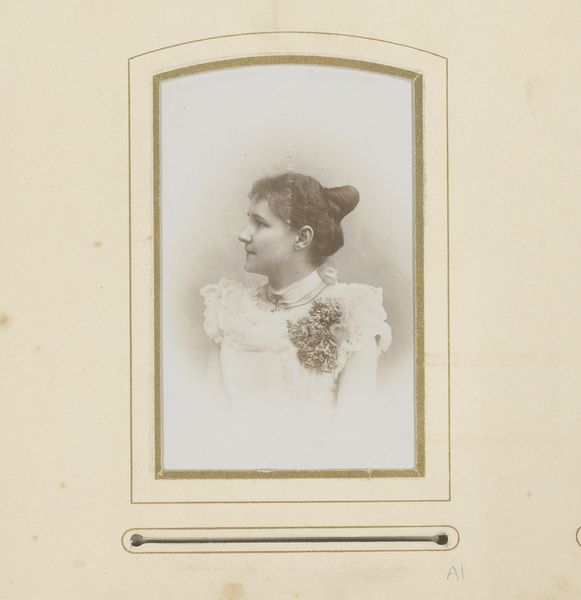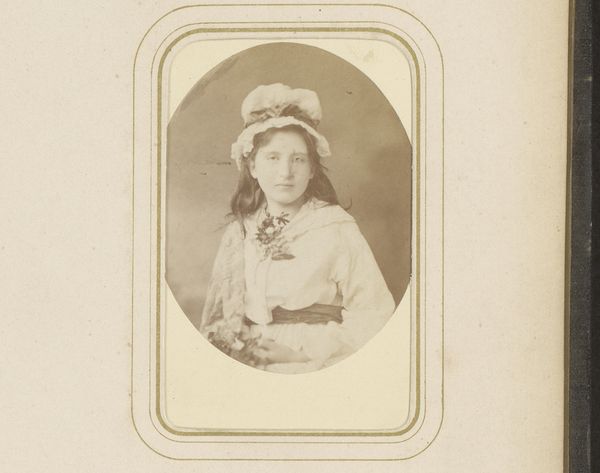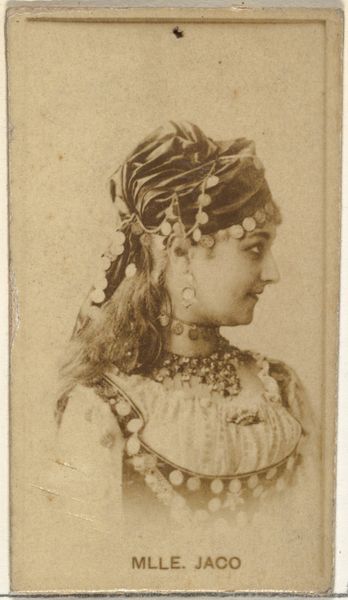
print, photography
#
portrait
# print
#
photography
#
realism
Dimensions: height 85 mm, width 52 mm
Copyright: Rijks Museum: Open Domain
Editor: Here we have a photograph, "Portret van een jonge vrouw met hoofddoek," by Carl Seegert, dating from somewhere between 1870 and 1900. It's striking how direct her gaze is. What stands out to you about this portrait? Curator: For me, it's impossible to ignore the cultural codes embedded within this image. Look at the subject’s attire – the headscarf, the ornate vest. It speaks to a specific cultural identity, perhaps Eastern European. What does it mean to visually represent someone in this way during a period marked by both emerging nationalisms and colonial expansion? Does the photograph exoticize her, or does it celebrate a particular heritage? How do the two interact? Editor: That's a great point! I was so focused on the aesthetic qualities that I overlooked that. So, this image might not simply be a neutral representation? Curator: Precisely. Consider the power dynamics at play in portraiture of this era. Photography was becoming increasingly accessible, but who had the power to control the narrative, to frame the subject and define their identity through visual representation? Were images like this used to solidify racial or cultural stereotypes? How was her community portrayed at that moment, and to what extent might that depiction be affected by her place in the world, especially with photography being used as a means of "scientific" categorization? Editor: That’s fascinating. So, instead of just seeing a pretty picture, we can explore complex issues of identity and representation? Curator: Exactly. Art provides an opportunity to critically examine the past and consider its lasting impacts on how we perceive one another today. This seemingly simple portrait can open a window onto conversations about cultural appropriation, power, and the enduring legacy of colonialism. Editor: This has completely changed my perspective on how to approach portraiture. I will be more mindful of context and history in the future. Thank you! Curator: You’re very welcome. Remember, art is never created in a vacuum.
Comments
No comments
Be the first to comment and join the conversation on the ultimate creative platform.

